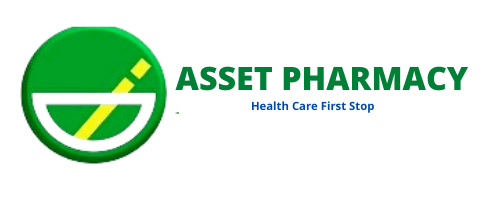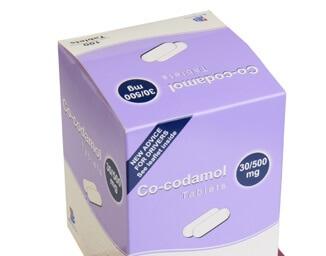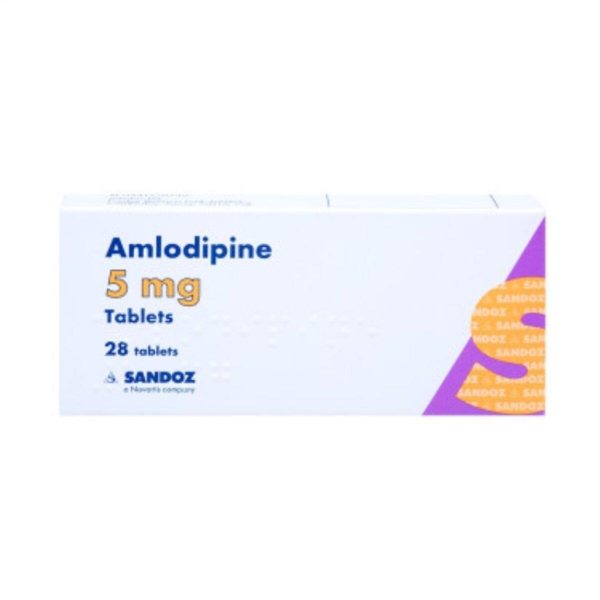Ceftriaxone 1g Powder for Solution for Injection
Antibiotics given to adults and children (including newborn babies)
Treats a variety of infections
Active Ingredient: Ceftriaxone (as ceftriaxone sodium) 1g
Original price was: ₦3,190.00.₦2,000.00Current price is: ₦2,000.00.
- Description
- Additional information
- Brand
- How to Use
- Product Details
- Side Effects
- Ingredients
- How to store
- Prescription Product
- Delivery
Ceftriaxone 1g Powder for Solution for Injection
Ceftriaxone injection is an important antibiotic that helps to kill bacteria and fight infection. It is used extensively in both adults and children, including newborn babies. Ceftriaxone works by attacking the bacteria directly, killing them and preventing them from causing further harm. This makes it an essential medicine for many people. Ceftriaxone belongs to a group of medicines called cephalosporins, which are some of the most commonly prescribed antibiotics. Cephalosporins are generally well tolerated and have a wide margin of safety. However, as with all medicines, there is always the potential for side effects. These are usually mild and temporary, but should be reported to your doctor if they persist or bother you.
Ceftriaxone 1g Powder for solution Reviews
After using Ceftriaxone 1g Powder for solution, it\’s helpful to let others know about your experience. Reviews of an item help other users know that medicines received have helped the condition it is claimed for, how well the treatment worked or any issues to be aware of. We invite our users to leave a review of both their treatment and of the service provided. Click on the reviews tab to see if there has been feedback on this item.
What is the price of Ceftriaxone 1g Powder for solution in Nigeria?
The price of Ceftriaxone 1g Powder for solution is N1,200
Where can you buy Ceftriaxone 1g Powder for solution In Nigeria?
You can Buy Ceftriaxone 1g Powder for solution at Asset Pharmacy Lagos Nigeria, Nigeria\’s Largest Online Pharmacy.
Ceftriaxone 1g Powder for solution is not available to buy over the counter. You need a prescription to buy Ceftriaxone 1g Powder for solution
Ceftriaxone 1g Powder for solution is a prescription drug that legally requires a medical prescription to be dispensed.
To order this product you confirm that you are under the care of your doctor or consultant and have been given permission by them for purchase, fulfillment & use in treatment with their written consent.
You will be required to send Asset Pharmacy your prescription
Brand
Ceferex
How to Use
How Ceftriaxone is given
Ceftriaxone is usually given by a doctor or nurse. It can be given as
- a drip (intravenous infusion) or as an injection directly into a vein or
- into a muscle.
Ceftriaxone is made up by the doctor, pharmacist or nurse and will not be mixed with or given to you at the same time as calcium-containing injections.
The usual dose
Your doctor will decide the correct dose of Ceftriaxone for you. The dose will depend on the severity and type of infection; whether you are on any other antibiotics; your weight and age; how well your kidneys and liver are working. The number of days or weeks that you are given Ceftriaxone depends on what sort of infection you have.
Adults, older people and children aged 12 years and over with a body weight greater than or equal to 50 kilograms (kg):
- 1 to 2 g once a day depending on the severity and type of infection. If you have a severe infection, your doctor will give you a higher dose (up to 4 g once a day). If your daily dose is higher than 2 g, you may receive it as a single dose once a day or as two separate doses.
Newborn babies, infants and children aged 15 days to 12 years with a body weight of less than 50 kg:
- 50-80 mg Ceftriaxone for each kg of the child’s body weight once a day depending on the severity and type of infection. If you have a severe infection, your doctor will give you a higher dose up to 100 mg for each kg of body weight to a maximum of 4 g once a day. If your daily dose is higher than 2 g, you may receive it as a single dose once a day or as two separate doses.
- Children with a body weight of 50 kg or more should be given the usual adult dose.
Newborn babies (0-14 days)
- 20 – 50 mg Ceftriaxone for each kg of the child’s body weight once a day depending on the severity and type of infection.
- The maximum daily dose is not to be more than 50 mg for each kg of the baby’s weight.
People with liver and kidney problems
You may be given a different dose to the usual dose. Your doctor will decide how much Ceftriaxone you will need and will check you closely depending on the severity of the liver and kidney disease.
If you are given more Ceftriaxone than you should
If you accidentally receive more than your prescribed dose, contact your doctor or nearest hospital straight away.
If you forget to use Ceftriaxone
If you miss an injection, you should have it as soon as possible. However, if it is almost time for your next injection, skip the missed injection. Do not take a double dose (two injections at the same time) to make up for a missed dose.
If you stop using Ceftriaxone
Do not stop taking Ceftriaxone unless your doctor tells you to. If you have any further questions on the use of this medicine, ask your doctor or nurse.
Product Details
Product Information
What you need to know before you are given Ceftriaxone
You must not be given Ceftriaxone if:
- You are allergic to ceftriaxone or any of the other ingredients of this medicine (listed in section 6).
- You have had a sudden or severe allergic reaction to penicillin or similar antibiotics (such as cephalosporins, carbapenems or monobactams). The signs include sudden swelling of the throat or face which might make it difficult to breath or swallow, sudden swelling of the hands, feet and ankles, and a severe rash that develops quickly.
- You are allergic to lidocaine and you are to be given Ceftriaxone as an injection into a muscle.
Ceftriaxone must not be given to babies if:
- The baby is premature.
- The baby is newborn (up to 28 days of age) and has certain blood problems or jaundice (yellowing of the skin or the whites of the eyes) or is to be given a product that contains calcium into their vein.
Warnings and precautions
Talk to your doctor or pharmacist or nurse before you are given Ceftriaxone if:
- You have recently received or are about to receive products that contain calcium.
- You have recently had diarrhoea after having an antibiotic medicine. You have ever had problems with your gut, in particular colitis (inflammation of the bowel).
- You have liver or kidney problems (see section 4).
- You have gall stones or kidney stones
- You have other illnesses, such as haemolytic anaemia (a reduction in your red blood cells that may make your skin pale yellow and cause weakness or breathlessness).
- You are on a low sodium diet.
- You experience or have previously experienced a combination of any of the following symptoms: rash, red skin, blistering of the lips eyes and mouth, skin peeling, high fever, flu-like symptoms, increased levels of liver enzymes seen in blood tests and an increase in a type of white blood cell (eosinophilia) and enlarged lymph nodes (signs of severe skin reactions, see also section 4 “Possible side effects”).
If you need a blood or urine test
If you are given Ceftriaxone for a long time, you may need to have regular blood tests. Ceftriaxone can affect the results of urine tests for sugar and a blood test known as the Coombs test. If you are having tests:
- Tell the person taking the sample that you have been given Ceftriaxone.
If you are diabetic or need to have your blood glucose level monitored you should not use certain blood glucose monitoring systems which may estimate blood glucose incorrectly while you are receiving ceftriaxone. If you use such systems check the instructions for use and tell your doctor, pharmacist or nurse. Alternative testing methods should be used if necessary.
Children
Talk to your doctor or pharmacist or nurse before your child is administered Ceftriaxone if:
- He/She has recently been given or is to be given a product that contains calcium into their vein.
Other medicines and Ceftriaxone
Tell your doctor or pharmacist if you are taking, have recently taken or might take any other medicines.
In particular, tell your doctor or pharmacist if you are taking any of the following medicines:
- A type of antibiotic called an aminoglycoside.
- An antibiotic called chloramphenicol (used to treat infections, particularly of the eyes).
Pregnancy and breast-feeding and fertility
If you are pregnant or breast-feeding, think you may be pregnant or are planning to have a baby, ask your doctor for advice before taking this medicine.
The doctor will consider the benefit of treating you with Ceftriaxone against the risk to your baby.
Driving and using machines
Ceftriaxone can cause dizziness. If you feel dizzy, do not drive or use any tools or machines. Talk to your doctor if you experience these symptoms.
Sodium content
Ceftriaxone 2 g powder for solution for injection or infusion contains 169.1 mg sodium (main component of cooking/table salt) in each 2 g bottle. This is equivalent to 8.5% of the recommended maximum daily dietary intake of sodium for an adult.
Ceftriaxone 1 g powder for solution for injection or infusion contains 85.4 mg sodium (main component of cooking/table salt) per 1g vial, equivalent to 4.3% of the recommended maximum daily dietary intake of sodium for an adult.
Ceftriaxone 250 mg powder for solution for injection contains less than 1 mmol sodium (23 mg) per 250 mg vial, i.e. is essentially “sodium free”.
Side Effects
Side Effects
Possible side effects
Like all medicines, this medicine can cause side effects, although not everybody gets them.
The following side effects may happen with this medicine:
Treatment with ceftriaxone, particularly in elderly patients with serious kidney or nervous system problems may rarely cause decreased consciousness, abnormal movements, agitation and convulsions.
Severe allergic reactions (not known, frequency cannot be estimated from the available data)
If you have a severe allergic reaction, tell a doctor straight away.
The signs may include:
- Sudden swelling of the face, throat, lips or mouth. This can make it difficult to breathe or swallow.
- Sudden swelling of the hands, feet and ankles.
Severe skin reactions (not known, frequency cannot be estimated from the available data)
If you get a severe skin reaction, tell a doctor straight away.
The signs may include:
- A severe rash that develops quickly, with blisters or peeling of the skin and possibly blisters in the mouth (Stevens-Johnson syndrome and toxic epidermal necrolysis which are also known as SJS and TEN).
- A combination of any of the following symptoms: widespread rash, high body temperature, liver enzyme elevations, blood abnormalities (eosinophilia), enlarged lymph nodes and other body organs involvement (Drug Reaction with Eosinophilia and Systemic Symptoms which is also known as DRESS or drug hypersensitivity syndrome).
- Jarisch-Herxheimer reaction which causes fever, chills, headache, muscle pain, and skin rash that is usually self-limiting. This occurs shortly after starting Ceftriaxone treatment for infections with spirochete such as Lyme disease.
Other possible side effects:
Common (may affect up to 1 in 10 people)
- Abnormalities with your white blood cells (such as a decrease of leucocytes and an increase of eosinophils) and platelets (decrease of thrombocytes).
- Loose stools or diarrhoea.
- Changes in the results of blood tests for liver functions.
- Rash.
Uncommon (may affect up to 1 in 100 people)
- Fungal infections (for example, thrush or genital fungal infections).
- A decrease in the number of white blood cells (granulocytopenia).
- Reduction in number of red blood cells (anaemia).
- Problems with the way your blood clots. The signs may include bruising easily and pain and swelling of your joints.
- Headache.
- Dizziness.
- Feeling sick or being sick.
- Pruritis (itching).
- Pain or a burning feeling along the vein where Ceftriaxone has been given. Blisters, deep redness or rash, burned areas, pain, irritation, itching at the injection site.
- A high temperature (fever).
- Abnormal kidney function test (blood creatinine increased).
Rare (may affect up to 1 in 1,000 people)
- Inflammation of the large bowel (colon). The signs include diarrhoea, usually with blood and mucus, stomach pain and fever.
- Difficulty in breathing (bronchospasm).
- A lumpy rash (hives) that may cover a lot of your body, feeling itchy and swelling.
- Blood or sugar in your urine.
- Oedema (fluid build-up).
- Shivering.
Not known (Frequency cannot be estimated from the available data)
- A secondary infection that may not respond to the antibiotic previously prescribed
- Form of anaemia where red blood cells are destroyed (haemolytic anaemia).
- Severe decrease in white blood cells (agranulocytosis).
- Convulsions.
- Vertigo (spinning sensation).
- Inflammation of the pancreas (pancreatitis). The signs include severe pain in the stomach which spreads to your back.
- Inflammation of the mucus lining of the mouth (stomatitis).
- Inflammation of the tongue (glossitis). The signs include swelling, redness and soreness of the tongue.
- Problems with your gallbladder and/or liver which may cause pain, nausea, vomiting, yellowing of the skin, itching, unusually dark urine and clay coloured stools.
- A neurological condition that may occur in neonates with severe jaundice (kernicterus).
- Kidney problems caused by deposits of calcium ceftriaxone. There may be pain when passing water (urine) or low output of urine.
- A false positive result in a Coombs’ test (a test for some blood problems).
- A false positive result for galactosaemia (an abnormal build up of the sugar galactose).
- Ceftriaxone may interfere with some types of blood glucose tests – please check with your doctor.
Reporting of side effects
If you get any side effects, talk to your doctor, pharmacist or nurse. This includes any possible side effects not listed in this leaflet.
Ingredients
Product Ingredients
Ceftriaxone 1 g powder for solution for injection or infusion
The active substance is ceftriaxone.
Each vial contains 1 g (grams) ceftriaxone as ceftriaxone sodium. There are no other ingredients.
The displacement volume of 1 g of Ceftriaxone is 0.71 ml in water for injections and 1% lidocaine hydrochloride solution. When adding 10 ml of water for injections, the final concentration of the reconstituted solution is 93.37 mg/ml. When adding 3.5 ml of 1% lidocaine hydrochloride solution, the final concentration of the reconstituted solution is 237.53 mg/ml.
How to store
How to store
How to store Ceftriaxone
Keep this medicine out of the sight and reach of children.
Do not use this medicine after the expiry date which is stated on the carton and on the vial or bottle label after EXP. The expiry date refers to the last day of that month.
Do not store above 30°C, keep vial or bottle in the outer carton in order to protect from light.
Chemical and physical in-use stability of the reconstituted product has been demonstrated for at least 6 hours at or below 25°C or 24 hours at 2-8°C.
From a microbiological point of view, the product should be used immediately. If not used immediately, in-use storage times and conditions prior to use are the responsibility of the user and would not be longer than the times stated above for the chemical and physical in-use stability.
Do not throw away any medicines via wastewater. Ask your pharmacist to throw away medicines you no longer use. These measures will help protect the environment.
Prescription Product
This product requires a prescription from your Doctor.
Please follow the instruction received from the pharmacy on how to forward your prescription to the pharmacy after you have paid for the medicine.
A prescription drug is a pharmaceutical medication that legally requires a medical prescription to be dispensed.
To order this product you confirm that you are under the care of your doctor or consultant and have been given permission by them for purchase, fulfillment & use in treatment with their written consent
Delivery
Delievry time are estimates. Can vary due to the time of day you order.
Delivery time estimate are subject to the courier company.
Shipping to Lagos cost starts from N1850 Next day delivery
Shipping to Rest Of Nigeria – 2-3 days cost starts from N2000
Shipping to Rest of Africa – 5-7 working days Cost starts from N12000
Shipping to Europe 7 – 14 working days Cost srats from N18000
Shipping to Rest of the world – 7 – 14 days Cost starts from N18000
You may also like…
Rocephin 1g Powder for solution – Ceftriaxone, 1 Inj
Original price was: ₦15,000.00.₦11,000.00Current price is: ₦11,000.00.






